
How to Use 74HC08: Examples, Pinouts, and Specs
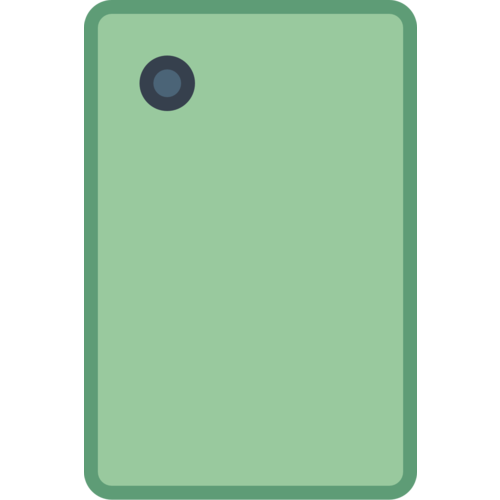
 Design with 74HC08 in Cirkit Designer
Design with 74HC08 in Cirkit DesignerIntroduction
The 74HC08 integrated circuit is a high-speed Si-gate CMOS device that contains four independent 2-input AND gates. This component is designed to operate from a wide range of power supply voltages and offers low power consumption, making it a popular choice for digital logic systems. Common applications include:
- Logic gate functions in digital circuits
- Signal gating
- Input/output buffering
- Building complex logic functions by combining multiple gates
Explore Projects Built with 74HC08
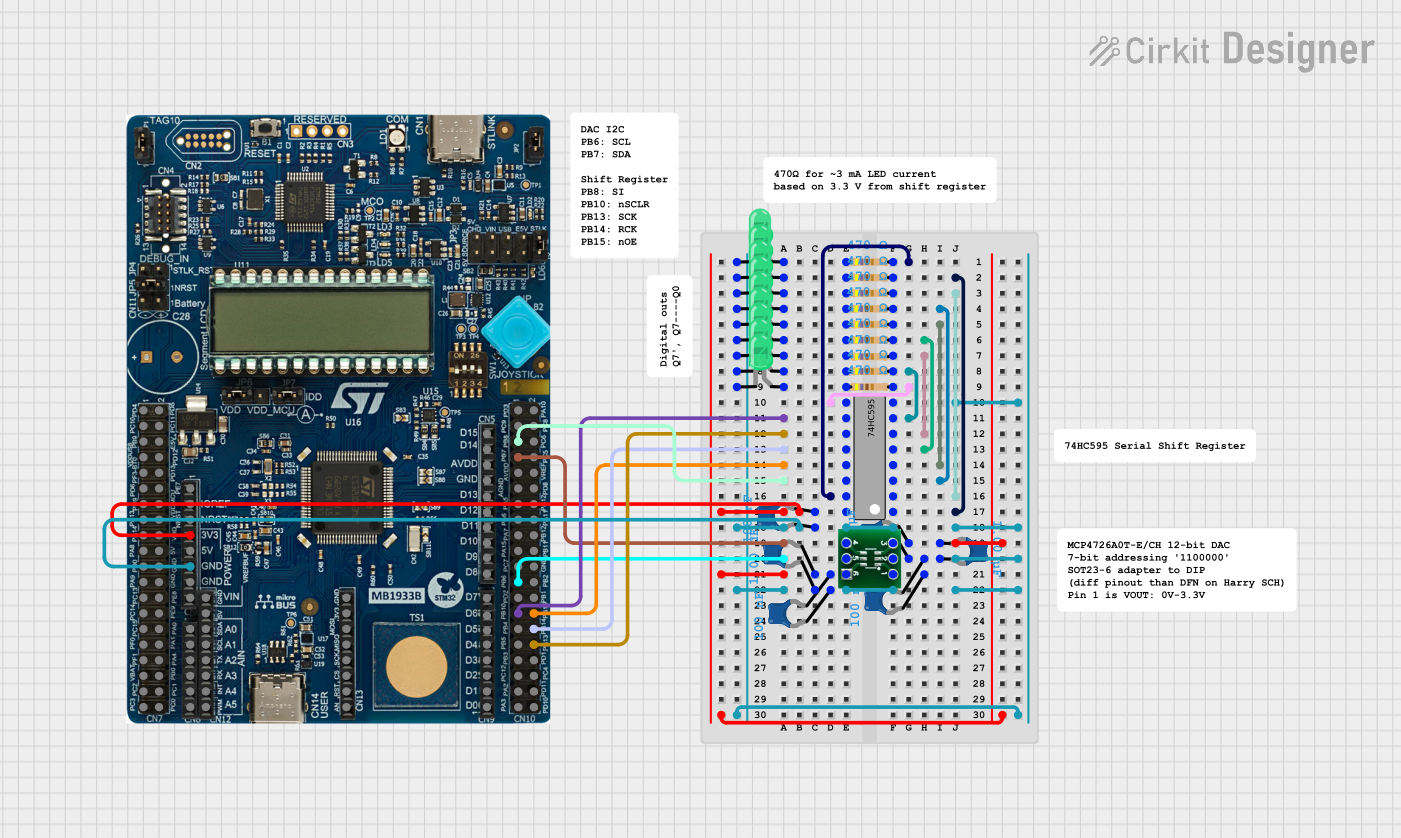
 Open Project in Cirkit Designer
Open Project in Cirkit Designer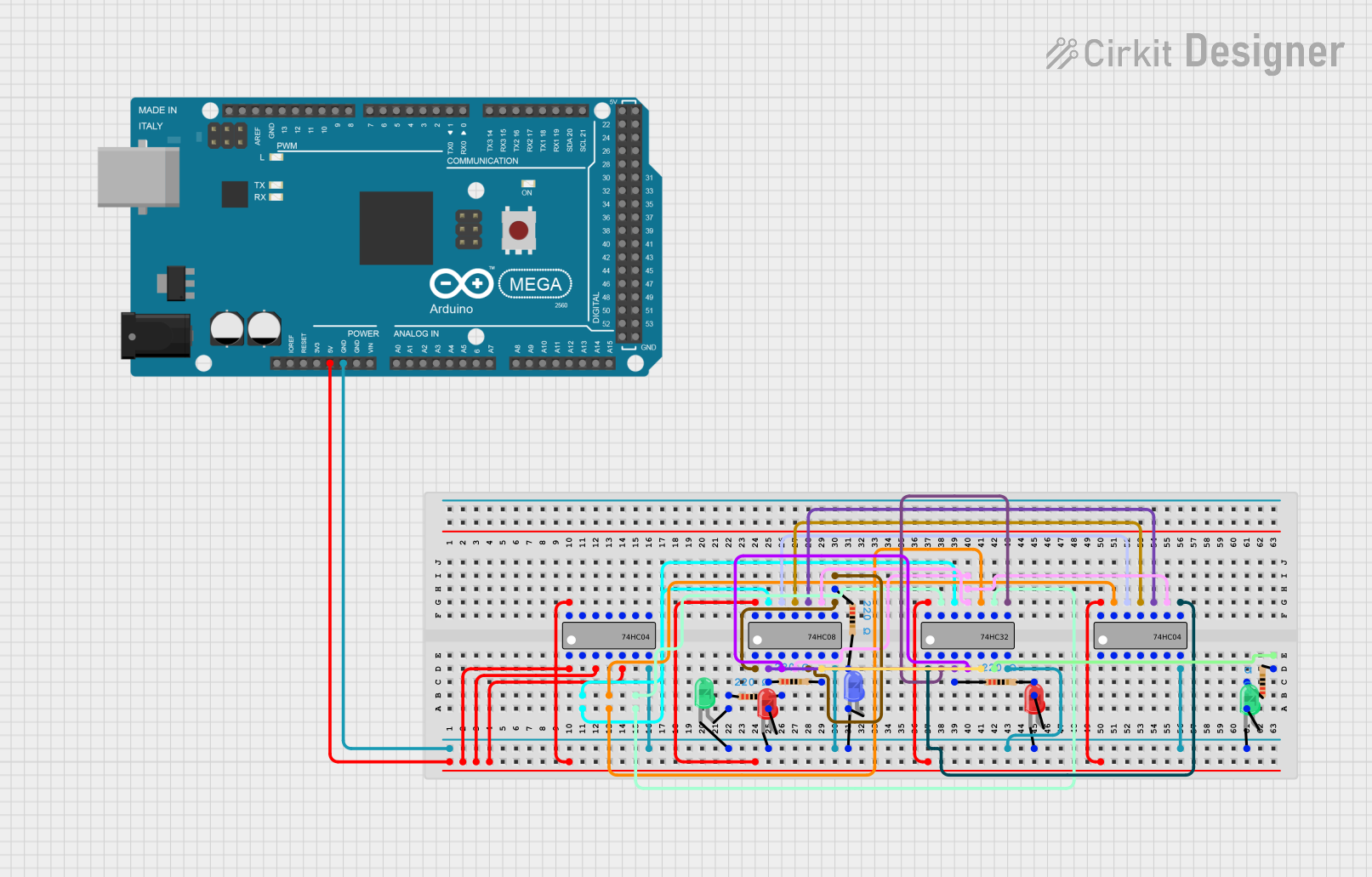
 Open Project in Cirkit Designer
Open Project in Cirkit Designer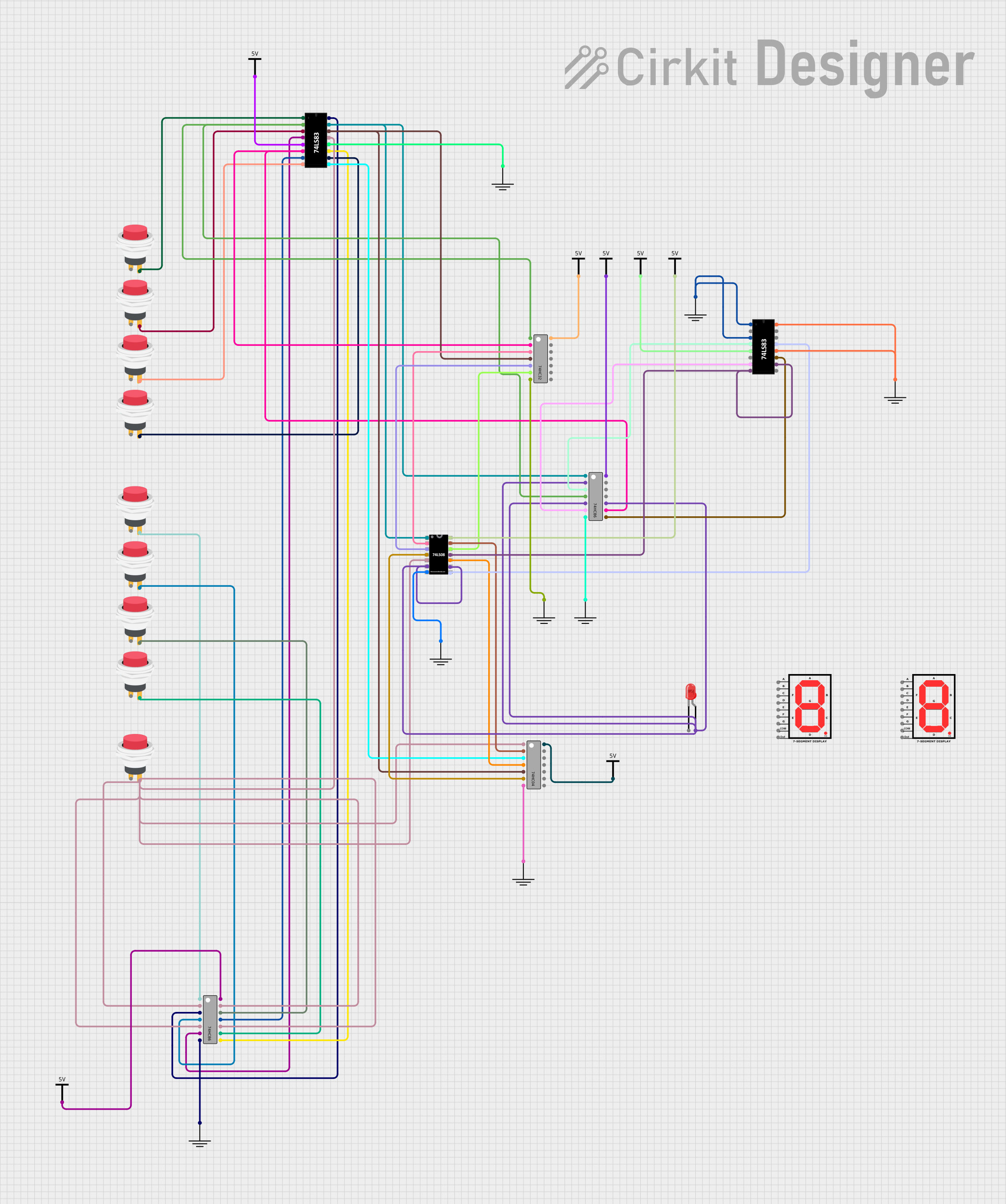
 Open Project in Cirkit Designer
Open Project in Cirkit Designer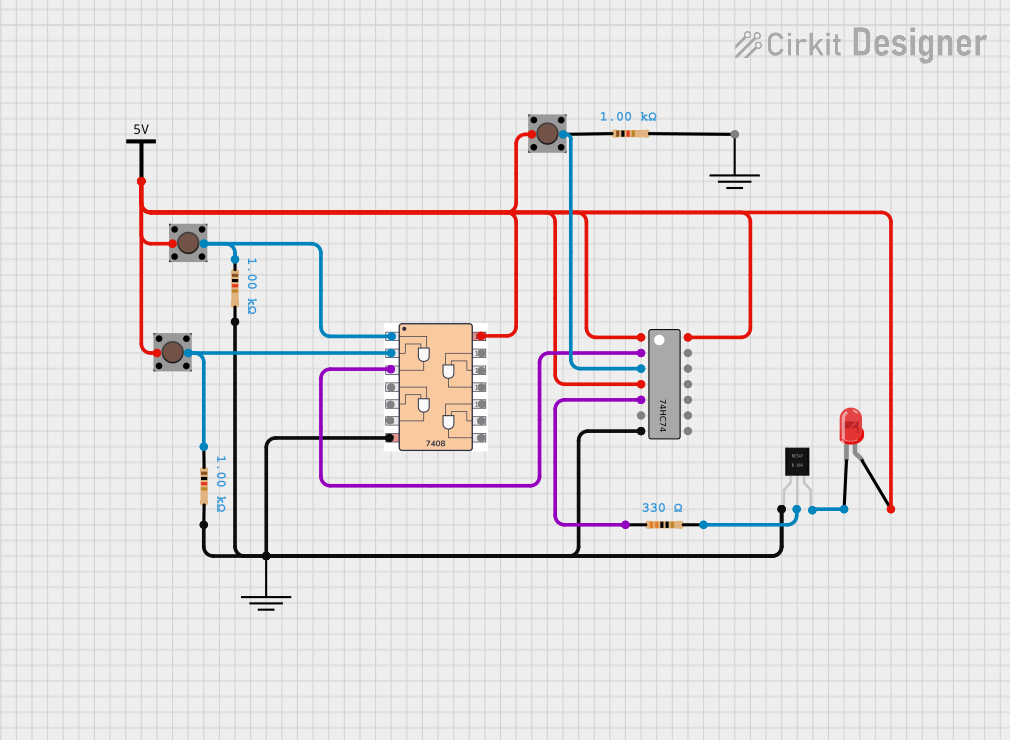
 Open Project in Cirkit Designer
Open Project in Cirkit DesignerExplore Projects Built with 74HC08

 Open Project in Cirkit Designer
Open Project in Cirkit Designer
 Open Project in Cirkit Designer
Open Project in Cirkit Designer
 Open Project in Cirkit Designer
Open Project in Cirkit Designer
 Open Project in Cirkit Designer
Open Project in Cirkit DesignerTechnical Specifications
Key Technical Details
- Supply Voltage (Vcc): 2.0V to 6.0V
- Input Voltage (Vin): 0V to Vcc
- Output Voltage (Vout): 0V to Vcc
- High-Level Input Voltage (VIH): Minimum 2V
- Low-Level Input Voltage (VIL): Maximum 0.8V
- High-Level Output Current (IOH): Maximum -5.2 mA
- Low-Level Output Current (IOL): Maximum 5.2 mA
- Propagation Delay Time: Approximately 8ns (at Vcc = 4.5V)
- Operating Temperature Range: -40°C to +125°C
Pin Configuration and Descriptions
| Pin Number | Name | Description |
|---|---|---|
| 1 | 1A | Input A for Gate 1 |
| 2 | 1B | Input B for Gate 1 |
| 3 | 1Y | Output for Gate 1 |
| 4 | 2A | Input A for Gate 2 |
| 5 | 2B | Input B for Gate 2 |
| 6 | 2Y | Output for Gate 2 |
| 7 | GND | Ground (0V) |
| 8 | 3A | Input A for Gate 3 |
| 9 | 3B | Input B for Gate 3 |
| 10 | 3Y | Output for Gate 3 |
| 11 | 4A | Input A for Gate 4 |
| 12 | 4B | Input B for Gate 4 |
| 13 | 4Y | Output for Gate 4 |
| 14 | Vcc | Positive Supply Voltage |
Usage Instructions
How to Use the 74HC08 in a Circuit
- Connect the Vcc pin (14) to the positive supply voltage within the specified range (2.0V to 6.0V).
- Connect the GND pin (7) to the ground of the power supply.
- Apply input signals to the A and B inputs of the desired AND gate(s).
- The output Y of each gate will be HIGH only if both inputs A and B are HIGH.
Important Considerations and Best Practices
- Ensure that the power supply voltage does not exceed the maximum rating to prevent damage.
- Inputs should not be left floating; connect them to a defined logic level if not in use.
- Use pull-up or pull-down resistors as needed to maintain input signal integrity.
- Decoupling capacitors (typically 0.1 µF) should be placed close to the Vcc pin to filter out noise.
Troubleshooting and FAQs
Common Issues
- Outputs not behaving as expected: Verify that all inputs are at valid logic levels and that the power supply is within the specified range.
- Device heating up: Check for short circuits or supply voltage exceeding the maximum rating.
Solutions and Tips
- Double-check wiring and ensure that inputs are not inadvertently shorted to Vcc or GND.
- Use a multimeter to measure the supply voltage and input levels to ensure they are within the specified range.
FAQs
Q: Can I use the 74HC08 at a supply voltage lower than 2.0V? A: No, the device may not function correctly below the minimum supply voltage.
Q: What happens if I exceed the maximum input voltage? A: Exceeding the maximum input voltage can damage the device and lead to permanent failure.
Q: Can I connect the outputs of two gates together? A: No, connecting outputs directly can cause damage. Use an OR gate or diodes for wired-OR logic instead.
Example Code for Arduino UNO
The following example demonstrates how to use the 74HC08 with an Arduino UNO to perform a simple AND operation.
// Define the input and output pins
const int inputPinA = 2; // Connect to 1A of 74HC08
const int inputPinB = 3; // Connect to 1B of 74HC08
const int outputPin = 4; // Connect to 1Y of 74HC08
void setup() {
// Configure the input and output pins
pinMode(inputPinA, INPUT);
pinMode(inputPinB, INPUT);
pinMode(outputPin, OUTPUT);
}
void loop() {
// Read the state of the inputs
bool stateA = digitalRead(inputPinA);
bool stateB = digitalRead(inputPinB);
// Perform the AND operation and output the result
bool andResult = stateA && stateB;
digitalWrite(outputPin, andResult);
// Delay for a short period to debounce the inputs
delay(50);
}
Remember to connect the Arduino's GND to the 74HC08's GND pin, and the 5V pin to the Vcc pin of the 74HC08. The inputs (1A and 1B) should be connected to the corresponding Arduino pins, and the output (1Y) should be connected to an LED with a suitable current-limiting resistor to visualize the AND gate's output.